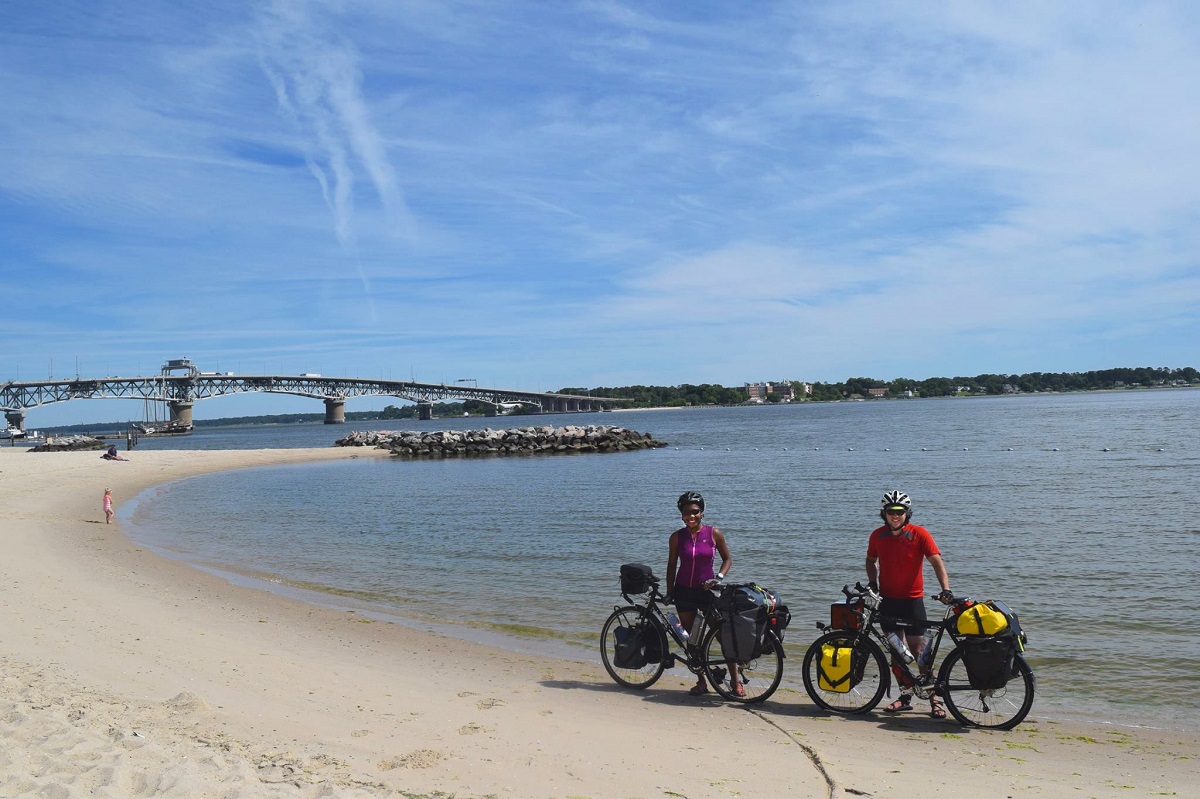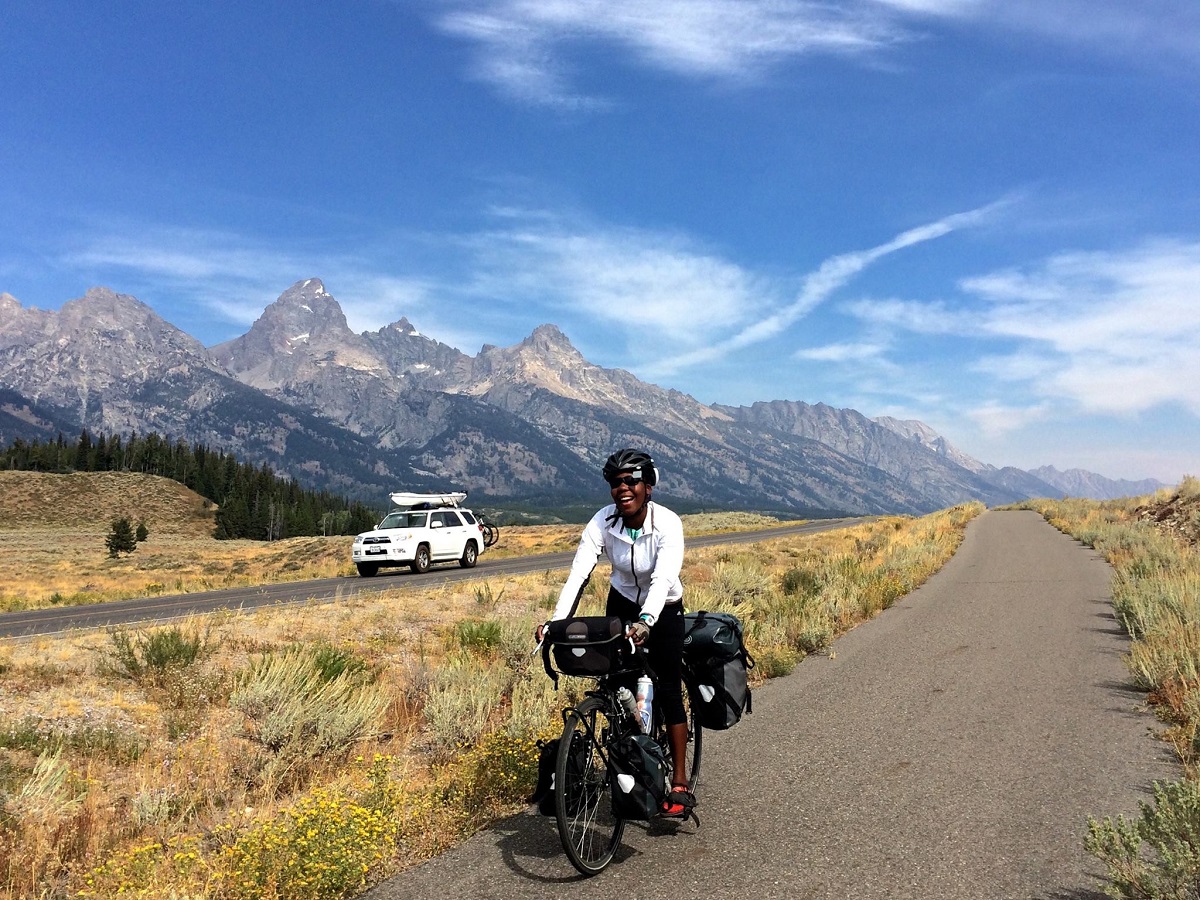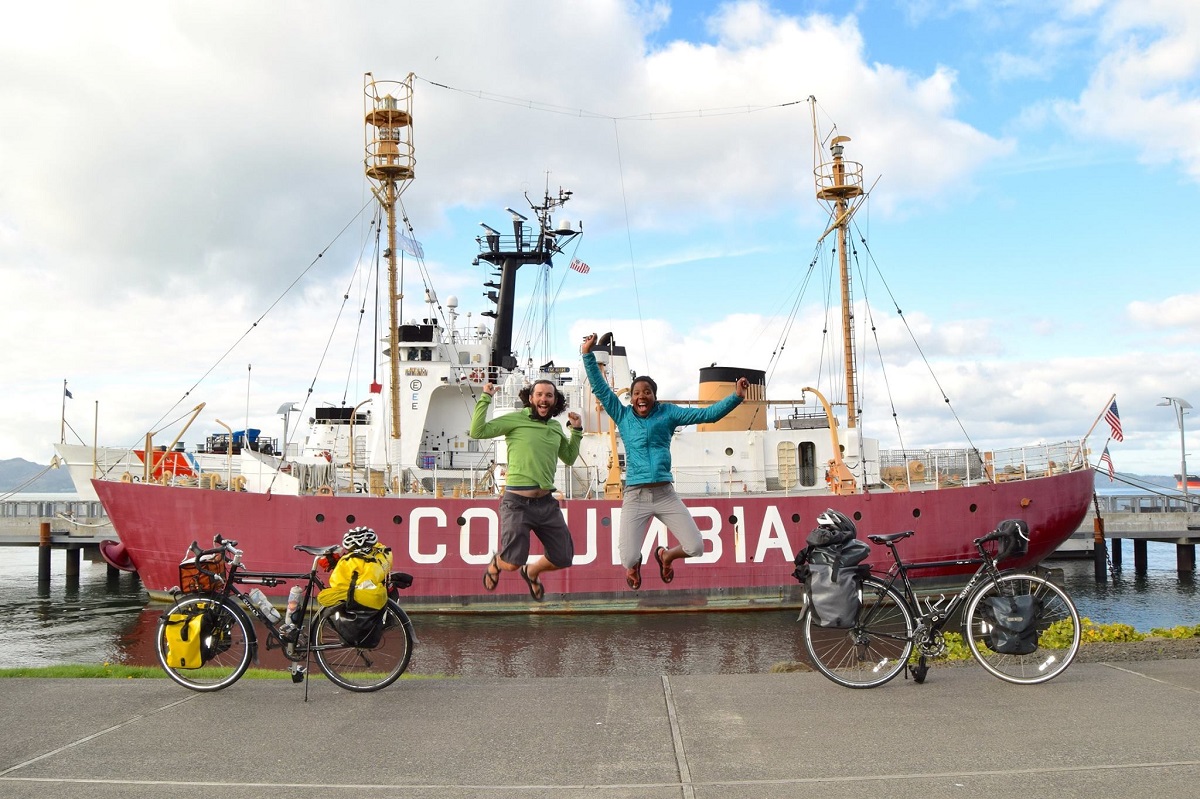The Double-Edged Sword of Trailblazing
Of all the things I’ve hoped to achieve in my lifetime, cycling across the country was not one of them. Yet I find myself here with the pleasant memory of pedaling 4,468 miles from Yorktown, Virginia, to Astoria, Oregon, three summers ago. It’s often difficult to convey just how fortuitous this endeavor truly was. I’m from Miami, where avid cyclists are not easy to come by. Though I’ve been a lifelong athlete, I mostly played team sports like volleyball. And after having my K-Mart bike stolen in middle school, I didn’t own a bike again for nine years. So cycling across the country was a completely unpredictable undertaking.
I grew up in Hialeah, a predominantly Cuban suburb of Miami. We have very few bike lanes, very few people commuting by means other than a car, and no embedded cycling culture. That’s to say that not only was I not a cyclist growing up, I also was not acquainted with anyone who was. This changed my senior year in college when a friend of mine, also from Miami, introduced me to fixed-gear cycling. Given the flat terrain in Florida, it was an easy activity to take on. Close to the end of the school year, I gave into the fixie craze and bought my first bike since middle school. Shortly thereafter, I moved to Denver and quickly understood why Colorado is so often heralded for its cycling culture. Though Denver, like most U.S. cities, needs quite a lot of work to be truly bike-friendly, it was worlds ahead of Miami in that regard.
After moving to Denver in 2014, the opportunities to ride seemed endless. I was cycling in my neighborhood, to run errands, to work, and eventually covering longer distances I would not have previously fathomed. Sometime in 2015, my partner Austin introduced me to the TransAmerica Trail. He learned about it after watching a video several years prior and promised himself that he would do something like that one day when the time was right. Although I thought riding across the country sounded like a spectacular and thrilling feat, it also mostly sounded like something only a crazy person would do. And more importantly, it sounded like something only a White person would do.
What we see is often what we internalize as what we can become.
At this point, Austin and I were in grad school at the University of Denver and were slated to finish our degree programs in June of 2016. Austin had already decided that the summer after graduating was finally the right time for him to do the TransAm, and at this point, he was going at it alone. His internship was also slated to end in June, so he didn’t have to quit his job to go on the trip. Though he did so gently, he nudged me periodically to join him on the ride. I initially dismissed all of his pitches, but things slowly started changing. I was ready for a big adventure after graduate school, and although I was juggling a full-time job along with school, there were glaring signs that I was ready to move on. As things began falling into place, I ultimately agreed to join him.
Having already purchased my Surly Cross-Check, we began to accumulate the needed gear for the tour. We purchased the TransAm maps, started watching a lot of videos and reading blogs, and became engrossed with the idea of going on this trip together.
I was just as excited as I was apprehensive. I knew I could ride 50 miles in one day (which was what we hoped to average), but I just didn’t know whether I could do it with the added weight and on a daily basis. Austin had been cycling for years prior to setting out on the trail, so he had a strong foundation that I lacked. And notably, we only did two training rides of less than 60 miles … with no weight on the bike.
I was also nervous about getting stuck in the middle of nowhere under a storm, having nothing to eat or no place to sleep, getting attacked by the dogs in Kentucky, and, most importantly, being hit by drivers (especially the logging/coal truck drivers in the East).
Being a Black woman traversing small-town America by bike was also a worry for me, though that worry was, in small ways, abated by Austin. Somehow, none of these fears was enough to dissuade me.

So on June 13, 2016, we dipped our wheels in the York River and headed west.
We decided to ride east to west, despite most riders doing the contrary, because we wanted to escape the humidity of the East early on and wanted to end up in the Pacific Northwest to do some exploring after the bike trip. Though we planned to average 50 miles per day, we did closer to 30–35 miles during the first few days, the Appalachian Mountains and the weight proving to be difficult. After crossing our first state line, I was nervous that I didn’t have the strength to keep going. At this point, Austin also got sick with a fever so we were afraid that we would have to cancel the trip. But after hospital visits and self-talks, some mechanical issues, and mailing things home that we didn’t need, we started covering longer distances. Once we crossed the Ozarks in Missouri, we were covering between 60 and 90 miles per day. On our longest day, in Kansas, we rode 118 miles.
The views and experiences throughout the trip were tremendous.
As we traversed small-town America, I was blown away by what beautiful country often goes unexplored or dismissed. From the crystal-clear rivers of Missouri to big sky country in Montana, we were so impressed by the beauty and diversity in geography.
Even more impressive was the extraordinary hospitality we found. We met so many people on the trail who were willing to help us, feed us, allow us in their homes, or provide us with a place to sleep or an area to pitch a tent in. In the East, there were a lot of churches that took in cyclists, some of which have been doing this since 1976. Though we met some people who thought we were absolutely crazy, most of them were in awe of what we were doing and respected us for our courage.
It was always fun to meet other riders, hear their stories, and exchange useful tips, like the best places to stop for pie. It was also motivating to see how they proceeded and ultimately finished after following them on social media. The only shame was in not seeing another Black woman to share trials, concerns, and triumphs with. And when I asked hosts about how many Black women they have seen or hosted on the trail in previous years, they often could not recall a single one.

After 101 days, we made it to our final destination — Astoria, Oregon! Though we lost two or three weeks due to mechanical issues, layover days, and health issues, we were just thrilled to finish. It was very difficult to process the overwhelming emotions we felt at the time; the only sentiment that truly resonated in that moment was disbelief. I was in disbelief not only because I was physically able to pedal almost 4,500 miles across the country but that someone who looked like me and grew up the way I did was able to have such an experience.
The physical aspect of riding the TransAm was, at first, the most formidable. But it turns out that it was the least I had to worry about. It was as gratifying as it was surprising to discover (and develop) muscular strength I didn’t know or think I had. But the real revelation was the remarkable grit and resilience I falsely assumed I wasn’t cut out to characterize. Though I have always had an intrepid spirit, I never had such an opportunity to act on it, nor did I think I deserved to.
But now I know that I did.
What a lot of people often fail to realize is that when you grow up in a place where scarcity seems endemic to your community, that scarcity becomes your frame of reference. You develop a narrower outlook of what is and is not possible, what you can and cannot do, and where you do and do not belong. More importantly, what we see is often what we internalize as what we can become.
So now that I have completed the TransAmerica Trail, I advocate ardently about representation in the cycling community. I hope that other women and girls who look like me give themselves permission to do things that make them feel grand and invincible. And though it’s always possible to be a trailblazer, it is challenging to take on something new when you don’t feel welcome in the environment, when you do not have someone that looks like you to look up to, and when you cannot lean on your own community because they simply may not understand what you’re doing or why you want to do it.
For me, my immediate family was and still is supportive, but they do not truly understand how meaningful the trip was for me. As immigrants from Dominican Republic, they certainly did not grow up with many cyclists and much less did they have the opportunity to quit a job to ride their bikes for fun. Those opportunities aren’t meant for “people like us.” Or so I thought.

Going across the country on a bike felt declaratory. It was empowering for me, and I hope that it will be for others, particularly Black women and girls. As straightforward as it is to ride a bike, it is much more difficult to overcome the apprehension of entering a world that does not expect you in it. Even if you are not being directly discriminated against or barred from joining in on an activity, it is difficult to develop that type of self-concept if it has not been nurtured throughout the years. Even now, we have not had a single Black American woman go pro in road racing (though Ayesha McGowan is on her way to change that!).
As a way to serve as a positive influence, I look for any and all opportunities to share my spiel about the importance of diversity in the cycling community. One of my ways of getting Black women more involved in cycling is by leading the Denver chapter of Black Girls Do Bike. BGDB is a national organization founded by Monica Garrison with more than 80 local chapters. I established the Denver chapter in 2017 and have been leading monthly rides ever since.
I hope that more women keep pedaling toward equity and finding freedom on two wheels.
I have also been reaching out to as many contacts as I can to find out whether I was indeed the first Black woman to complete the TransAmerica Trail. Despite being more than 40 years past the inaugural Bikecentennial, it’s a double-edged sword to say that I would not be surprised if I was the first to complete it on a self-supported ride.
I’m excited to get to a place where seeing Black women cycling and touring is the rule and not the exception. Though I understand that we comprise less than 13 percent of the population in the U.S., we are still underrepresented in the sport, and I would like to be part of a broader push to diversify the cycling community as well as other outdoor activities. Generally, I hope that more women keep pedaling toward equity and finding freedom on two wheels. I know that I have never felt as free as when I was able to put “real” life on pause to eat all the carbs I wanted on my journey from coast to coast.
